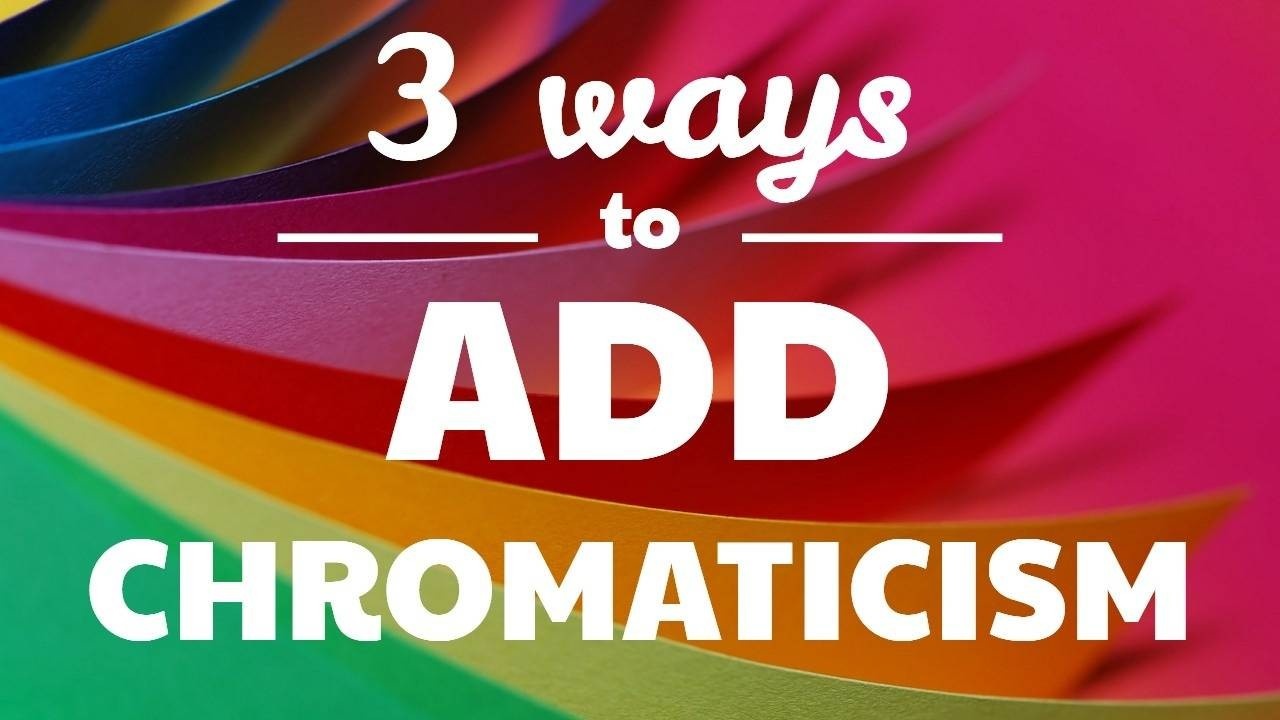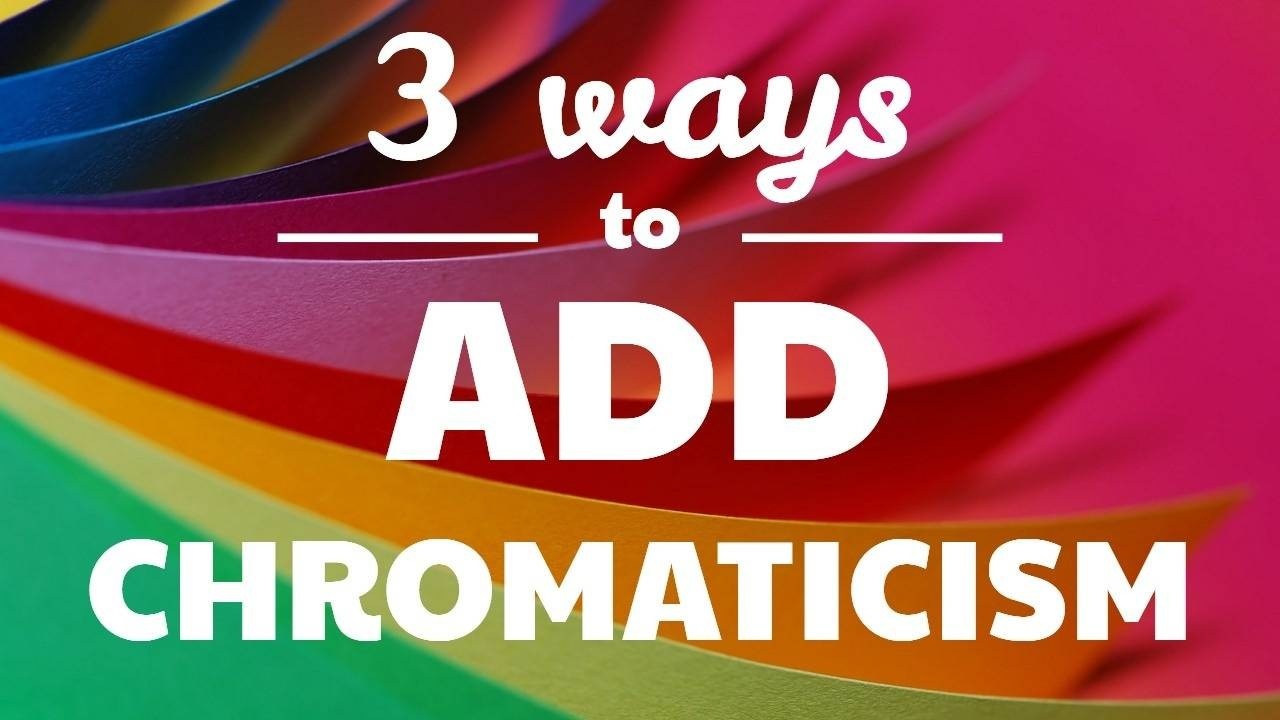
3 Ways to Add Chromaticism for Jazz Guitarists
May 31, 2016How to add more chromaticism to your improvised lines? This is a fascinating topic, and a popular one too! Lots of students, online and off, have been asking about chromatic lines and fluidity. In this blog, we'll discuss three straight-forward way you can integrate more chromatic-sounding melodic lines in your improvisation.
Adding Chromaticism: Download Your PDF
This is a rather "big lesson", so I've included a PDF file for your convenience .
Playing Chromatically: Where does it hurt?
In my teaching, these kinds of questions often come up. People ask:
- All my lines sound inside. What can I do about it?
- Which notes should I play to sound outside on purpose when I'm soloing?
- I often wind up going up/down the scales and arpeggios while improvising. What else is there to do?
If you're in the same boat, don't worry. You need to start slow and play very well inside the changes, and then start adding outside notes slowly. For starters, here are three ways you can add a refreshing breeze of chromaticism into your own playing.
#1 Learn and Practice the Chromatic Scale
First, learn the chromatic scale.
This is a no brainer, right? We want more chromatics on the instrument, so we learn the chromatic scale.
Quite frankly, this can get pretty boring pretty quickly. I've included the chromatic scale in the PDF attached to this blog post, for reference. But we won't dig too deep on it. And feel free to look at this lesson discussing strictly the chromatic scale if you have some catching up to do.
You can think of the chromatic scale like learning the alphabet. We know the chromatic scale contains all the 12 notes we have at our disposal, so let's not spend too much time on this right now. Just learn it ascending and descending. In the PDF you'll find the 4-note per string version and the 6-note per string version.
#2 Get familiar with Bebop Scales
Another interesting way you can add chromaticism to your lines is by practicing bebop scales, and they are a neat way to add chromatics because you add notes to the scales you already know and use. Their fingerings on the guitar are awesome. This will be the topic of the next video lesson, so stay tuned.
#3 Practice These 3 Chromatic Exercises
Lastly, the third way you can practice chromatics is to use exercises. More precisely: chromatic exercises. This is the focus of this post. I'll show you three precise chromatic exercises, so you can start practicing right now.
Chromatic exercise number one is using 4-note groupings. This is a great way to ingrain the chromatic scale deeper in your ears and fingers.
Simply take the chromatic scale you already know, and apply a pattern to it, such as 1,2,3,4. Then 2,3,4,5. Then 3,4,5,6, etc. Here's one possible fingering for 4-note groupings, for the beginning of the exercise:

There are plenty of other fingerings you could use that are appropriate for this exercise. You should also learn the descending version!
Chromatic exercise number two is the constrained improvisation chromatic scale exercise. This is where we'll actually improvise purely chromatically. You'll have to use your creativity to come up with ideas, and to avoid repeating yourself over and over. In a way, this is great "chromatic ear training" so to speak.
Here's the exercise: chose an interval to solo within. Then solo chromatically strictly by using the interval as your constraints, or your boundaries. This means that we are allowed to play all the notes that are chromatic within the interval inside of the interval, right?
For example, let's pick the F note, and the interval of a perfect 4th. So, from F to Bb. In the video, there's a short demonstration of yours truly soloing with that concepts. Here are the only note I'm allowing myself to play with for this exercise:

This is fun, but make sure you really hear everything that you are playing. Of course, you should modify the exercise by imposing different constraints on it. You pick a different "range" (a different interval). The example above was just using a perfect 4th. You could also decide on a position on the fretboard, or also can add interesting pre-defined rhythms to your improvisation.
The third and last example is a chromatic exercise called "root to root". It is is somewhat of a mechanical one to finish with, it's also amazingly beneficial for your ears.
With "root to root" exercise, we play through the 12 notes of the chromatic scale but it provides a tonal center. We play the chromatic scale ascending, but we keep repeating our "root", in this case C, in between every note. Here's the ascending version:

Notice that we repeat our "root" high and low in every bar. This can prove quite technically challenging at faster tempos! Constantly repeating the root makes it ring within your ears. In our case, the root is C, here.
Of course you have to try the descending version on your own, as you can find it in the PDF. Try to play the "root to root" exercise for chromaticism in eighth-notes and sixteenth0notes, or in triplets, from any other starting root than C. There are several good fingerings, so find what works for you and then stick to it.
Rhythms and Applications: How to Add Chromaticism Wrapup
That's it for the chromatic exercises for now.
There's two more things we need to discuss before I let you go:
First, time (and rhythms). With impeccable timing, you can really get away with murder while soloing.
Let yourself play anything, note-wise, that you desire, so long as the lines are in solid timing. Lots of great jazz artists do this in their solo.
It's worth giving timing and rhythms 100% of your attention when phrasing. If you're playing "free" (as all the exercise in this blog post), the focus should be on rhythms! As a side note to, issues I personally come across in teaching private lessons are related to timing and rhythms 80% of the time. It don't mean a thing if it ain't got that swing, right?
Secondly, I wanted to talk about applications. Don't force it and use these exercises verbatim in your solos. You don't need to. Your aim is to get and hear more ideas while you are improvising, so let the ideas play you, and not the other way around. My advice is, just practice the chromatic exercises without expecting anything in return, and then someday, some chromatic idea will pop up in your ears while you are soloing. That's how our ears work, really. :-)










